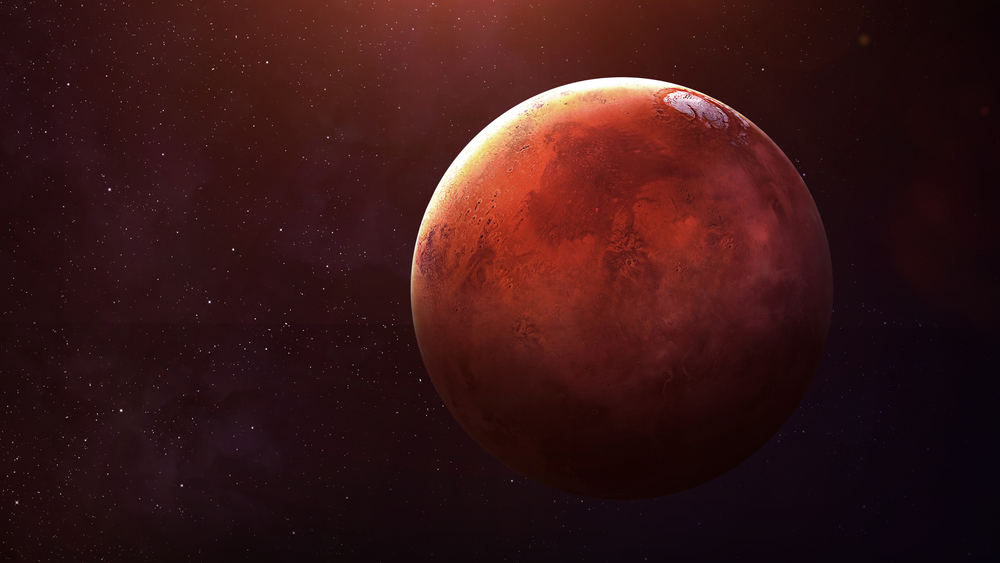Hope Probe Successfully Lifts Off in Historic Mission to Mars
The United Arab Emirates created history this morning with the successful launch of the Emirates Mars Mission (EMM)s’ Hope Probe from the Tanegashima Space Center in Japan, thus becoming the first interplanetary mission by any Arab country.
His Highness Sheikh Mohammed bin Rashid Al Maktoum, Vice President and Prime Minister of the UAE and Ruler of Dubai said: “The UAE has created history with an unprecedented Arab space achievement. We rely on the UAE’s youth and they never disappoint. They have made us all proud and have ushered in a new era in our history.”
His Highness added: “The journey has begun and the mission has just commenced, next stop: The Red Planet.” His Highness reiterated: “Going beyond the Earth’s gravitation is a new era in the history of our scientific achievements.”
His Highness Sheikh Mohammed bin Zayed Al Nahyan, Crown Prince of Abu Dhabi and Deputy Supreme Commander of the UAE Armed Forces, said: “The UAE has strengthened its position as a country that creates the future and embraces hope. I congratulate the Emirati people for the historic achievement. Our global position is further enhanced, thanks to the efforts of our people.”
He added: “The success of this launch is a culmination of five decades of accomplishments across different fields for the UAE. Today, we’re reaping what our founding fathers have sowed by creating qualified Emirati talents which is helping us compete with the world.”
“The UAE is winning the bet, and our people have proved their ability to achieve the impossible. The future is much greater and better.”
After liftoff, the Hope Probe successfully detached from the launch rocket, and first signals were received by the Control Center at Al Khawaneej in Dubai.
The first command from the ground control station were also transmitted to the Probe to deploy its solar panels, operate its satellite navigation systems, and launch its missile propulsion systems, effectively marking the start of the Probe’s journey to the Red Planet.
The journey is expected to last seven months, traveling a distance of 493 million km, before entering the Martian orbit in February 2021, coinciding with UAE’s Golden Jubilee celebrations.
The Hope Probe successfully lifted off at 01:58 am UAE time, after the countdown for the last 10 seconds was done in Arabic – the first time in the history of space missions when the countdown was in Arabic.
Success After the Launch Delay
Carrying the Hope Probe, the 289 tonnes and 53 metres-long Mitsubishi Heavy Industries [MHI] H2A launch vehicle aimed for the stars. In the initial stage of the launch, the solid fuel propellant lifted the rocket after detaching from the launch pad, before the first stage separation traversing the dense lower atmosphere.
With the first stage jettisoned, the second stage takes over which accelerates the payloads to orbital velocity. The second stage engine shuts down after reaching its specified orbital targets, and then fires again to propel the Hope Probe spacecraft on a trajectory towards Mars
The Probe’s launch was delayed twice due to unstable weather conditions at the launch site in Tanegashima Island in Japan. Thick cloud cover and cold air layers disrupted the two previous launch dates on 15 and 17 July. The launch window lasts until 3 August 2020.
Weather conditions play a pivotal role in defining the timing for space missions due to their significant impact, especially in the upper atmosphere, to facilitate the rocket’s ascent into space as per its defined path. Weather conditions are checked and evaluated periodically before launches.
The successful launch of the Hope Probe culminates the constant efforts of Emirati engineers from the UAE Space Agency and the Mohammed Bin Rashid Space Centre who have worked round-the-clock at the launch site in Japan over the past three months. The engineers have conducted all final technical tests, evaluations and follow-ups, supported by an Emirati team at MBRSC control station.
The Probe team also overcame all technical, logistical and technological challenges posed by the COVID-19 pandemic and committed to the action plan that included simulation tests and other scientific tasks.
Scientific Asset
In addition to the interim qualitative achievements, the successful transfer of the probe during its 83-hour journey by land, air and sea from the MBRSC to the launch station on Tanegashima Island was indeed noteworthy.
The achievements of the UAE scientific team within the probe project includes 200 new scientific-technological designs, with 66 pieces of the Probe components manufactured in the UAE, in addition, the team helped in publishing 51 scientific papers, and 60,000 participants benefiting from the scientific and educational programs.
Probe schedule
As per its defined schedule, the Probe’s journey to the Red Planet will be covered in seven months, during which it will travel 493 million km. The Hope Probe is expected to reach the orbit of the Red Planet in February 2021, where it will remain for a full Martian year, the equivalent of 687 days.
The Probe will collect essential data, and provide the first comprehensive and complete picture of the climatic conditions on Mars throughout the year, the atmosphere changes during the day and between seasons of the year, monitoring Mars weather phenomena, temperature changes and climate patterns, in addition to revealing the causes behind surface erosion of the Red Planet.
The Hope Probe will collect this massive data on Mars and transmit it to the scientific data center in the UAE. The scientific team of the project in the UAE will index and analyze this data so that it will be shared with the scientific community to serve humanity.
The Hope Probe is carrying three instruments – the Emirates eXploration Imager [EXI], a digital camera that will capture high resolution images of Mars along with measuring water ice and ozone in the lower atmosphere through the UV bands; the Emirates Mars InfraRed Spectrometer [EMIRS] – to measure global distribution of dust, ice cloud, and water vapor in the Martian lower atmosphere; and the Emirates Mars Ultraviolet Spectrometer [EMUS], which will measure oxygen and carbon monoxide in the thermosphere and the variability of hydrogen and oxygen in the upper atmosphere.
The Hope Probe, which is the first Arab interplanetary mission, carries a message of hope for all the people of the region to revive a rich history of Arab and Islamic achievements in science and embody the UAE’s ambition and its continuous drive to challenge and overcome the impossible and nurture this culture in the country’s citizens. It is also the UAE’s contribution to shaping and making a promising future for humanity.






















 Kuwaiti developer URC signs with Ahmadiah Contracting for the Commercial District development at Hessah AlMubarak
Kuwaiti developer URC signs with Ahmadiah Contracting for the Commercial District development at Hessah AlMubarak